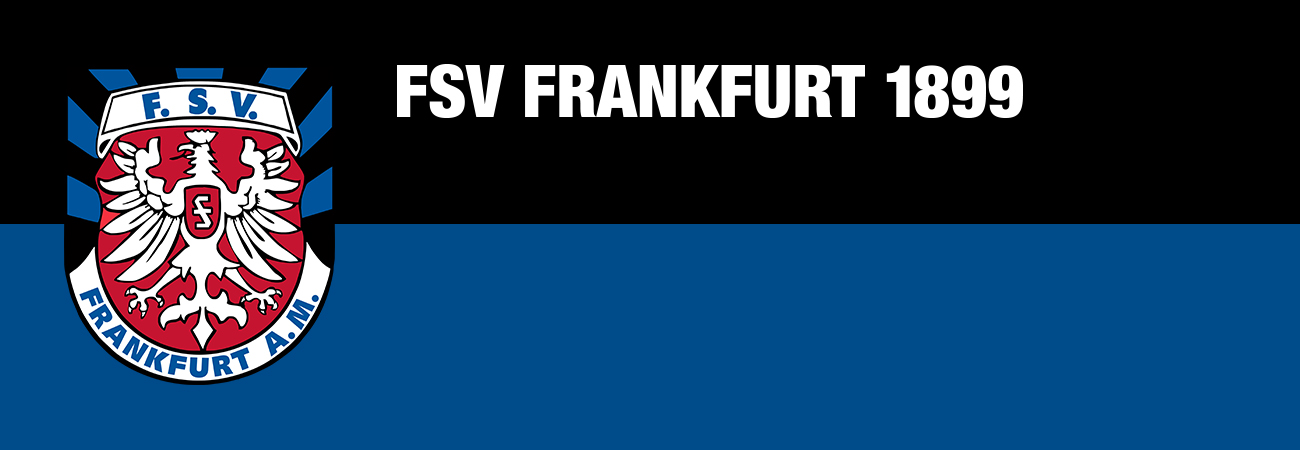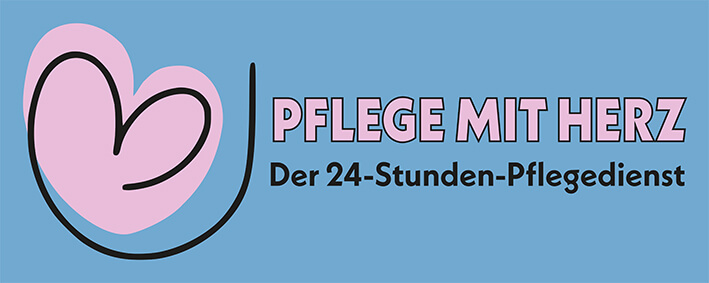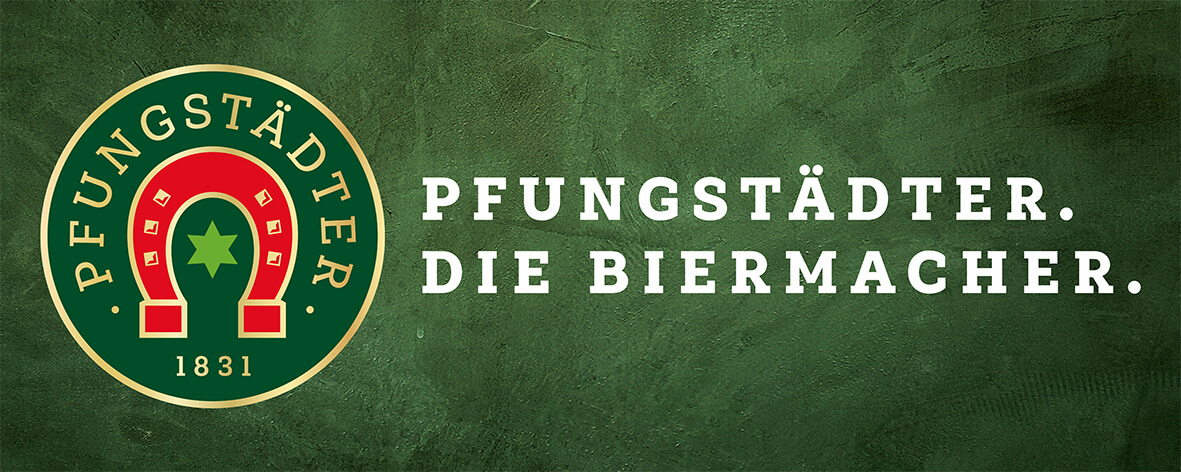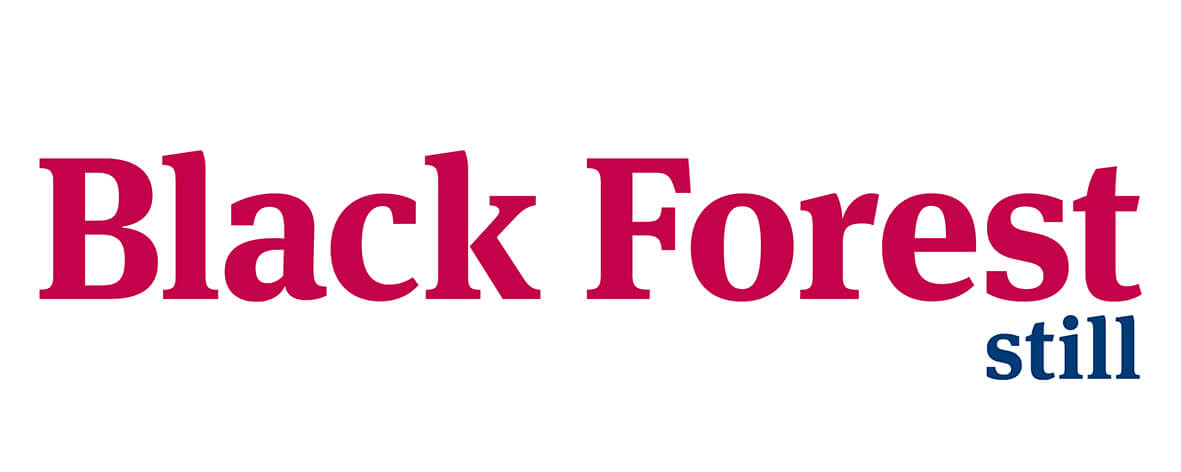Liebe Freunde des FSV Frankfurt. Klicken und lesen Sie sich hier durch 121 Jahre lebendige und aufregende Vereingeschichte. Reisen Sie durch die Zeit von Titeln, Abstiegen, Konkursanträgen und tollen Mannschaften die stets um den Aufstieg mitspielten.

1899 – Die Gründung
Am 20.08.1899 wurde, nach dem üblichen sonntäglichen Kick auf dem Glauburgplatz, der Fußball-Sportverein Frankfurt von 16 Frankfurter Buben gegründet. Schon ein Jahr zuvor, im Sommer 1898, hatten sie damit begonnen, als FC Nordend gemeinsam Fußball zu spielen. Die meisten von ihnen waren noch Schüler oder gerade dem schulpflichtigen Alter entwachsen. Aber alle zusammen waren sie die Idealisten.
Die Namen aller Gründer sind nicht mehr bekannt. Zu ihnen zählten die Brüder Strauß, Eberhard Kuchler, Friedel Gerbig, Philipp Stamm, Karl Spießhofer, Karl Münich, Joseph Fleckenstein, Jaques Kropf, Ludwig Meier, L. Japke, Herrmann Decher und Karl Heiderich. Die Gründer kamen vorwiegend aus dem Kleinbürgertum. Über große finanzielle Möglichkeiten verfügten sie nicht.
Fußball steckte hierzulande in den Kinderschuhen, doch die Begeisterung für diese neue „Kampfsportart” war von England kommend auf den Kontinent übergeschwappt und gerade bei den Jugendlichen fand sie immer mehr Anklang. Allerdings war das raue Spiel mit dem Ball gesellschaftlich verpönt. Kicken galt als unschicklich, vor allem ältere Leute beschimpften die Spieler als „Fußlümmel”, die lieber einen anständigen Sport mit den Händen betreiben sollten. Die 16 Frankfurter Jungs ließen sich von all dem nicht beirren. Zu groß war die Faszination, die das Fußballspiel auf sie ausübte.

1900 – Der FSV greift in das offizielleSpielgeschehen ein
Die Vereinsgründung war also vollzogen, doch der Neuling wollte nun auch ins offizielle Spielgeschehen eingreifen. Ein paar Monate mussten die „Helden der ersten Stunde” allerdings noch warten, ehe im Jahre 1900 die polizeiliche Anerkennung erfolgte. Wie es die Gruppe geschafft hat, die erforderlichen Genehmigungen zu erhalten, ist nicht mehr exakt zu klären. Möglich, dass einige ältere Mitglied dabei helfen konnten, die Formalitäten zu erledigen.
Der erste Sportplatz des FSV war die städtische Spielwiese im Prüfling. Ein Spiel gegen den drei Monate älteren Klub „Frankofurtia” wurde vereinbart und von den Bornheimern klar mit 5:1 gewonnen. Damit war der erste öffentliche Auftritt ein voller Erfolg.
Langsam aber sicher stießen die Bornheimer in die Phalanx der Frankfurter Spitzenvereine vor. Bereits 1902/03 nahmen „die Bernemer” erstmals an den Spielen um die Süddeutsche Meisterschaft teil. Nachdem in der Vorrunde der Wiesbadener FC besiegt worden war, wartete in der Zwischenrunde der altehrwürdige FC Hanau 93. Nach einem hartem Kampf unterlag der FSV gegen den haushohen Favoriten „nur” mit 6:3.
Die Spielkleidung war zu dieser Zeit übrigens schwarz. Das brachte der Mannschaft den Spitznamen „schwarze Teufel” ein. Doch auch viele der anderen Frankfurter Teams spielten in schwarz, so dass man sich bald auf eigene Farben besann: Fortan spielte der FSV in schwarz-blau quergestreiften Trikots, mit weißer Hose und grünen Stutzen.
Aber nicht nur Fußball stand auf dem FSV-Programm. In den Sommermonaten ruhte der Ball und es wurde Leichtathletik betrieben.

1905 – Der erste Titel der Vereinsgeschichte
Am 25. Juni 1905 feierte der FSV in Hanau den ersten Titel der Vereinsgeschichte. Im Finale der Runde des Frankfurter Assoziations Bundes konnten sich die Bornheimer in der Verlängerung gegen Victoria Frankfurt mit 4:2 durchsetzen. Freudetrunken traten die Spieler die Rückreise nach Frankfurt an, wo anschließend noch ausgiebig gefeiert wurde.
Im Jahr 1908 wurde dem Verein mitgeteilt, dass die Wiese im Prüfling bebaut werden würde. Mit Hilfe des späteren Ehrenvorsitzenden Jean Jehn gelang es, ein zusammenhängendes Fleckchen Land zu pachten. Es lag mitten im Feld zwischen der Seckbacher Landstraße und der Berger Straße. Der „Sportplatz Bornheim”, so der offizielle Name, – im Verein nur „s’ Plätzi” genannt – wurde am 6. September 1908 feierlich eingeweiht. Die später erbaute Tribüne mit Umkleidekabinen und Restauration war zu diesem Zeitpunkt noch in Planung. Die stolzen Platzbesitzer verloren im Eröffnungsspiel dem Karlsruher FC Phönix mit 2:7.
Im Jahr 1909 ließ sich der FSV ins Vereinsregister des Königlichen Amtsgerichts in Frankfurt eintragen. Dies war übrigens eine der ersten Amtshandlungen des neugewählten Vorstandes mit Willi Jeßler als Präsidenten.
Im Jahre 1911 wurde dem Verein von Gönnern ein Banner in den Farben Schwarz und Blau mit dem Leitspruch „Aus eigner Kraft” gestiftet. Eine Bannerweihe war seinerzeit ein bedeutendes gesellschaftliches Ereignis, aus dem gesamten Reichsgebiet wurden Glückwünsche übermittelt. Heute hängt dieses Banner in den Räumen am Bornheimer Hang.
In den Jahren vor dem Ersten Weltkrieg entwickelte sich der FSV zum weitaus größten Verein im Nordkreis. 1910 wurden 331 Mitglieder gezählt. Die Zahl verdoppelte sich innerhalb von zwei Jahren. Neben der Ersten Mannschaft schickte der FSV bereits 1910 sechs, 1912 sogar neun weitere Teams in den Wettkampf. Allesamt waren sie erfolgreich und vor allem die zweite Mannschaft konnte reihenweise Titel in ihrer Klasse erringen.

1925 – 1933 Die goldenen Jahre
Die Jahre 1925 bis 1933 wurden zu den erfolgreichsten der Vereinsgeschichte. Sechs Mainmeisterschaften, Süddeutscher Meister 1933 und Deutscher Vizemeister 1925 standen in der Bilanz. Damit nicht genug: Der FSV war zum echten Spitzenverein geworden, genoss im Ausland hohes Ansehen und zählte zu den zehn besten Vereinen der Weimarer Republik.
Den Höhepunkt der Vereinsgeschichte erlebten die Bornheimer pünktlich zum 25. Geburtstag. In der Süddeutschen Meisterschaft konnte der dritte Tabellenplatz erkämpft werden und der berechtigte zur Teilnahme an der Endrunde um die Deutsche Meisterschaft. Das war noch keinem anderen Frankfurter Team zuvor gelungen. Doch der Triumphzug war kaum aufzuhalten. Im Finale um die Deutsche Meisterschaft ging es vor mehr als 40.000 Zuschauern im Frankfurter Waldstadion gegen den 1. FC Nürnberg um den Titel. Nach 120 packenden Minuten stand der FSV als zweiter Sieger fest. Trotz der Niederlage hatten sich die Bornheimer einen dauerhaften Platz in den Annalen des DFB gesichert.
Im folgenden Jahr konnte die Mainmeisterschaft gefeiert werden, in der Endrunde um die Deutsche Meisterschaft war jedoch im Viertelfinale gegen Hertha BSC Schluss. 1927 wurde die Qualifikation für die Deutsche Meisterschaft nur knapp verpasst (1:3 gegen TSV 1860 München).
Ende der 20er Jahre jedoch brach die Erfolgsmannschaft weitestgehend auseinander. Tiefpunkt war der fünfte Platz in der Main-Bezirksliga, der nicht einmal für die Süddeutsche Trostrunde reichte. Der FSV war in diesen Jahren ansonsten Stammgast in den Spielen um die Deutschen Meisterschaften.
Nach den Spielorten “Im Prüfling” und an der “Seckbacher Landstraße” bezog der FSV das neu erbaute Stadion am “Bornheimer Hang”. Der Bau des Stadion ist dabei besonders dem damaligen Vereinspräsidenten Alfred J. Meyers zu verdanken. Schon damals bot das Stadion mit Tribüne und Stehterrassen 18.000 Zuschauern Platz und galt als eines der schönsten uns modernsten Stadion Süddeutschlands. Das Eröffnungsspiel am 11. Oktober 1931 gewann der FSV mit 3:0 gegen Germania 94.
Der größte Triumph des FSV sollte jedoch im Frankfurter Waldstadion gefeiert werden. Im Finale um die Süddeutsche Meisterschaft im Jahr 1933 gewann der FSV vor 15.000 Zuschauern gegen den TSV 1860 München mit 1:0. Nationalspieler Georg Knöpfle erzielte kurz vor Schluss per Freistoß den Siegtreffer. In der Endrunde um die Deutsche Meisterschaft verloren die Bornheimer jedoch mit 0:1 beim FC Schalke 04.

1933 – 1945 Die Gauligazeit
Nach der sog. Machtergreifung seitens der Nationalsozialisten machte die zügige Gleichschaltung auch vor dem Fußballbetrieb nicht Halt. Das Ligasystem wurde zwangsreformiert, die Gauligen entstanden. Die Spieler des FSV schnürten ihre Schuhe fortan in der Gauliga Südwest, Unmut machte sich auch bei anderen Teams breit.
Trotz der Neukonstellation blieben die Zuschauerzahlen gut. So kickte der FSV in der Saison 1933/34 bei seinem ersten Heimspiel vor immerhin 5.000 Zuschauern. Sportlich enttäuschte man jedoch, was mit dem Abgang von Spielmacher Georg Knöpfle zu erklären ist. Die Mannschaft fing sich in den Folgejahren und erkämpfte regelmäßig Positionen im oberen Tabellendrittel. Ein Höhepunkt war sicherlich das Erreichen des Pokalendspiels im Januar 1939. Dort sei der FSV betrogen worden, so eine Zeitzeugin. Denn der damalige Gegner Rapid Wien stammte aus der „Heimat des Führers“ und sollte den Pokal in das annektierte Österreich holen.
Obwohl der FSV gegen die klaren Favoriten in Führung gehen konnte, reichte es nicht zur Sensation. Übereinstimmend wird berichtet, der Schiedsrichter habe die Wiener bevorteilte, während er das Spiel der Frankfurter störte, wo er nur konnte. Die gut 3.000 mitgereisten Fans taten ihren Unmut nach Abpfiff – und drei Toren für Rapid – kund und stürmten erbost den Platz.
Während des Krieges spielte man im Reich weiterhin Fußball, doch Teile der Mannschaft wurden an die Front beordert. Das wirkte sich auch auf die Ergebnisse aus: Im Jahre 1941 war der FSV bloß noch eine graue Maus im Spielbetrieb. Dass andere Vereine in Sachen Einberufung noch mehr gebeutelt waren, davon zeugt der 23:3-Sieg gegen eine Rumpfmannschaft der SpVgg Neu-Isenburg in der Saison 1943/44. Während die Männer im Ausland reihenweise verheizt wurden, hielt man sich beim FSV mit A-Jugend-Spielern über Wasser, ehe die Flächenbombardements einen Spielbetrieb beinahe unmöglich machten. Zwangspausen waren an der Tagesordnung.
Noch bis kurz vor Kriegsende instrumentalisierten die Nazis den Fußball für ihre Zwecke. So sollte die Aufrechterhaltung des Spielbetriebs vom vermeintlichen Willen und Durchhaltevermögen der „Volksgemeinschaft“ zeugen. Nachdem das Regime den von ihm angezettelten Krieg endgültig verloren hatte und die Alliierten in Deutschland einmarschiert waren, wurde der FSV im Jahre 1945 als Verein aufgelöst, war er doch Mitglied im NS-Reichsbund für Leibesübungen.

1945 – 1962 In der Oberliga Süd
Die Stadt Frankfurt war aufgrund der Bombenangriffe stark zerstört. Dennoch regte sich bei Fans und Verantwortlichen gleichermaßen der Wunsch, wieder Fußball spielen zu können. Der FSV, eine von 43 wiedergegründeten Sportgemeinschaften, sollte eigentlich unter einem neuen, nicht belasteten Namen antreten, wogegen man sich aber erfolgreich wehrte. So brachte man das Kunststück fertig, als einer der wenigen hochklassigen Vereine in seiner Geschichte nie eine Namensänderung vollzogen zu haben. Der FSV startete in der aus der Taufe gehobenen Oberliga Süd und spielte dort bis zum Abstieg im Jahre 1962.
Zunächst galt es, eine Spielstätte zu finden, denn die Amerikaner nutzten das Stadion am Bornheimer Hang als Militär-Parkplatz. Man kickte dann, wie auch schon im Krieg, an der Eschersheimer Landstraße und startete mit einem 1:1 gegen den SV Waldhof. Erwähnenswert ist ein spektakulärer Derbysieg gegen die Eintracht (6:0), welcher zugleich den ersten Sieg in der Oberliga Süd überhaupt markierte. Im März 1946 bezog der FSV auch wieder sein gewohntes Stadion: Der Hang konnte halbwegs saniert werden und eine imposante Kulisse von 12.000 Zuschauer erschien zum ersten Heimspiel.
Die Spielzeit 1947/48 brachte gleich mehrere positive Veränderungen. So plante man eine Stadion-Erweiterung auf 25.000 Plätze, lief mit einer Reihe spielstarker Neuzugänge auf (Der Ball, so die FR damals, huschte nur so von Fuß zu Fuß), blieb infolge dessen zehn Spiele ungeschlagen und beendete die Saison als Tabellensiebter – somit war man bester hessischer Oberligist! Das sorgte für mächtig Betrieb beim Training: Gut 350 (!) Kiebitze waren damals keine Seltenheit. Für die Folgejahre war folglich die Qualifikation zur Deutschen Meisterschaft festes Ziel der Verantwortlichen. Ein Negativrekord in jenen Jahren zog sich bis in die jüngere Vergangenheit: Der FSV konnte von 1950 bis 1996 nicht auf dem Bieberer Berg gewinnen.
Im August 1953 war der Bornheimer Hang fertig ausgebaut und konnte feierlich eingeweiht werden. Mit den Jahren wurde das Gelände nach Westen hin erweitert, sodass auch die anderen Abteilungen nicht mehr auf fremdem Terrain spielen mussten. Doch auch nach Osten tat sich etwas. Die Mannschaft absolvierte 1954 eine DDR-Reise. Und 1957 wurde man immerhin als erster Club der Bundesrepublik in die UdSSR eingeladen. Im gleichen Jahr nahm man die Flutlichtanlage in Betrieb, eine der modernsten Europas. Fortschrittlich war auch die Jugendarbeit des FSV, denn die Bornheimer hatten Ende der 50er Jahre die größte Jugendabteilung in ganz Deutschland.
Dennoch ist die Epoche gekennzeichnet von einem schleichenden Niedergang. Spitzte sich die Krise anno 1957 bei der Affäre um Trainer Bogdan Cuvaj zu, gipfelte sie schließlich im Abstieg 1962. Der FSV wechselte die Klasse, just ein Jahr vor Gründung der Deutschen Bundesliga, zu der man, zumindest theoretisch bei Erringen der Süddeutschen Meisterschaft in der Folgesaison, hätte gehören können. Stattdessen entwickelte sich die Bornheimer bis in die 80er Jahre hinein zu einer Fahrstuhlmannschaft.

1962 – 1983 Im Fahrstuhl zwischen Zweit- und Drittklassigkeit
Während die Bundesliga kurz vor ihrer Gründung stand, trat der FSV den Gang in die Zweitklassigkeit an. Und doch bescherte dieses Jahr, welches mit Untergangsstimmung begann, den Schwarz-Blauen den ersten Meistertitel seit 30 Jahren: Frühzeitig feierte man den ersten Platz in der 2. Liga Süd und stieg somit in die bundesweite Regionalliga auf. Ganz Bornheim jubelte und man wähnte sich schon in der Beletage des deutschen Fußballs. Doch die Trauben hingen hoch, sodass man bloß knapp die Klasse halten konnte.
Die nächsten fünf Jahre lief es mehr schlecht als recht. Zur sportlichen Mittelmäßigkeit gesellten sich Fehlkäufe, ein Vorstandsrücktritt, Beinahe-Insolvenzen sowie eine Platzsperre aufgrund von Ausschreitungen. Sommer 1968 kam es dann knüppeldick: Der FSV stieg erstmalig in seiner Geschichte in die Hessenliga ab. Erschwerend hinzu kam eine Schuldenlast von stolzen 350.000 Mark. Der Verein war nun endgültig von einer überregionalen zu einer lokalen Größe geschrumpft.
Der FSV entwickelte sich zu dem, was heute gemeinhin als Fahrstuhlmannschaft bezeichnet wird. In den Jahren 1968 bis 1983 stiegen die Bornheimer viermal auf und ebenso häufig wieder ab. Als Highlight dürfen sechs Jahre Zweitligafußball (Süd) am Stück angesehen werden, in denen ein siebter Platz das Maß der Dinge war. Lief es sportlich nicht besonders, so waren heitere Anekdoten keine Seltenheit. Hervorzuheben bspw. das Auswärtsspiel 1972 beim TSV Mark-Hüls, bei dem der Unparteiische darauf bestand, dass der FSV mit weißen Hosen antrat. Diese befanden sich jedoch im heimischen Frankfurt, sodass zunächst ein Satz Hosen in einem Sportgeschäft aufgetrieben werden musste.
Weniger zu Lachen gab es in Sachen Finanzen und sportlicher Perspektive. Der Schuldenberg war im Jahre 1982 auf 900.000 Mark angewachsen und man stand, nach abermaligem Aufstieg, vor einer wenig aussichtsreichen Saison in der nunmehr eingleisigen Zweiten Bundesliga. Der FSV belegte schließlich den vorletzten Platz, ehe es für elf lange Jahre in die Niederungen der Oberliga Hessen ging.

1983 – 1996 Die lange Durststrecke und die beinahe Katastrophe
Die Jahre 1983 bis 1996 standen unter keinem guten Stern: Schon der Anfang der Periode war gekennzeichnet durch monatelange Intrigen und Querelen in der FSV-Führungsetage, die Verbindlichkeiten überstiegen gar die Millionengrenze. Das neu gewählte Präsidium verhandelte mit der Stadt Frankfurt, den Schuldenberg zu tilgen. Doch statt guter Nachrichten bestimmten anonyme Beschuldigungen über Schwarzgeld, Verletzungspech und ein sich stetig drehendes Personalkarussell das Bild. Erst mit der Verpflichtung von Trainer Dragoslav Stepanovic entspannte sich die Situation. Sportlich fing man sich ebenfalls. Bis ins Jahr 1988 stand der Verein stets im gesicherten Tabellenmittelfeld der Oberliga Hessen.
Das wirkte sich jedoch nicht positiv auf die Zuschauerzahlen aus. Hier zeigte sich, dass der Traditionsverein endgültig in der sportlichen Bedeutungslosigkeit angelangt war. Focht man früher große Spiele vor vielen tausend Zuschauern aus, so bevölkerten nun immer häufiger wenige hundert Beobachter die Spiele des Sportvereins. Sinnbildlich ein Freundschaftskick gegen den großen FC Bayern München, zu welchem man mit 10.000 Besuchern rechnete, jedoch bloß 2.000 kamen.
Zwei Lichtblicke schienen hell in dieser Zeit: Der FSV war im Jahre 1988 offiziell schuldenfrei und in der Saison 1993/94 gelang der lang ersehnte Aufstieg in die Zweite Bundesliga. Hier bekamen die Bornheimer ihre Grenzen jedoch deutlich aufgezeigt. Im ersten Heimspiel setzte es ein 0:5, am Ende der Saison hatte der FSV über 100 Gegentore kassiert. Der tiefe Fall ließ nicht lange auf sich warten: Dem Abstieg in die Regionalliga folgte bloß ein Jahr später der nahtlose Niedergang in die Oberliga Hessen.
Zuvor, Ende der Saison 1995/96, war es fraglich, ob man dort den Spielbetrieb überhaupt hätte aufnehmen können. Abermals schrieb der FSV tiefroten Zahlen, Gehälter standen und Machtkämpfe brachen aus – kurzum: Die Katastrophe war perfekt. Präsident Gerhard Emmerich, der anschließend seinen Hut nahm, sah keinen anderen Ausweg als einen Konkursantrag.

1996 – 2010 Auferstanden aus Ruinen
Neuer starker Mann im Verein wurde Bernd Reisig. Ihm und seinen Mitstreitern gelang das Unmögliche: Der Konkurs konnte abgewendet werden. Stück für Stück wurde der FSV saniert und eine schlagfertige Mannschaft zusammengestellt. Der Wiederaufstieg in die Regionalliga Süd schon im zweiten Oberliga-Jahr war der Lohn aller Mühen.
Doch bereits die Millenniums-Saison sorgte für einen herben Dämpfer. Der FSV hatte seinen Kopf durch einen Sieg am letzten Spieltag wieder einmal aus der Schlinge gezogen. Eigentlich. Denn ein Formfehler in der Partie gegen die Amateure des VfB Stuttgart – Elton da Costa stand nicht auf dem Spielberichtsbogen – kostete die Bornheimer den sicher geglaubten Klassenerhalt. Gesenkten Hauptes trat man den Gang in die Oberliga an. Dort spielte die Mannschaft stets um den Aufstieg mit, tränenreiche zweite Plätze inklusive, ehe 2006/07 die Sektkorken knallen konnten: Es ging zurück in die Regionalliga. Und wie! Unvergessen die Hinserie dieser Spielzeit: Der FSV gewann 16 von 17 Partien, am Saisonende musste man bloß eine Niederlage hinnehmen. Rekordverdächtig.
Kaum zu glauben, aber es kam noch besser für den Sportverein. Als Aufsteiger aus der Oberliga Hessen schaffte man 2007/08 den Durchmarsch in die Zweite Fußball-Bundesliga. Ein Meisterstück um Trainer Tomas Oral und seine Mannen! Nach zwölf Jahren bewegte sich der Traditionsverein endlich wieder in gewohntem Fahrwasser. 2009/10 stand nach eineinhalbjähriger Umbauzeit die Heimkehr in das Frankfurter Volksbank Stadion an. In die Saison fiel auch einer der kuriosesten Momente der jüngeren Bundesligageschichte: Gegner Duisburg erzielte ein Tor, das schlichtweg keines war. Der Ball, von der Latte abspringend, kam deutlich vor der Torlinie auf, ganz Fußballdeutschland sah es – außer dem Schiedsrichtergespann. Der Vorfall brachte die Bornheimer auf alle Titelseiten und der FSV war in aller Munde.
Aber der Verein zahlte im Profifußball freilich auch viel Lehrgeld. Die beiden Zweitliga-Spielzeiten konnte nur knapp die Klasse gehalten werden. Doch ging es über die Jahre gesehen kontinuierlich bergauf. Mittlerweile ist der FSV Frankfurt in der Zweiten Bundesliga angekommen und auf dem besten Wege, sich dort auch zu etablieren.
1899 bis 2011. Viel lebendige Geschichte beim Fußballsportverein Frankfurt.

2011 bis 2020 Höhenflug und tiefer Fall
Zur Saison 2011/12 duellierte sich der FSV Frankfurt im ersten Frankfurter Derby seit fast 50 Jahren mit der Frankfurter Eintracht. Aufgrund des hohen Zuschauerinteresses wurde das Spiel in die Commerzbank-Arena verlegt, wo sich 50.000 Zuschauern einfanden. Obwohl der FSV in beiden Derbys nicht viel holen konnte (0:4 und 1:6), sicherte die Mannschaft von Neu-Trainer Benno Möhlmann am Ende souverän die Klasse und lief nach 34 Spieltagen auf Platz 13 ein.
Die Spielzeit 2012/13 war für den FSV Frankfurt die erfolgreichste Zweitligasaison der Vereinsgeschichte. Im Gegensatz zu den Vorjahren hatte man frühzeitig nichts mit dem Abstieg zu tun und konnte sich konstant im oberen Drittel der Tabelle halten. Der FSV blieb in den ersten sieben Spielen ungeschlagen. Im DFB-Pokal erreichte er die zweite Runde, in der er gegen den VfL Wolfsburg ausschied. Nach der Hinrunde stand er auf Platz 8 und es sah zunächst nach einer Saison im Niemandsland der Tabelle aus. Nach einem durchwachsenen Start spielten die Bornheimer eine überraschend konstante Rückrunde. Bis zum 31. Spieltag war sogar der Relegationsplatz in Reichweite. Im direkten Duell gegen den drittplatzierten 1. FC Kaiserslautern musste man sich jedoch den Pfälzern geschlagen geben und beendete die Saison auf Platz 4.
Vor der Saison 2013/14 verließen mit John Verhoek (FC St. Pauli), Marcel Gaus (1. FC Kaiserslautern) und Yannick Stark (1860 München) drei Stammspieler den Verein. Nach einer turbulenten Spielzeit konnte der FSV mit einem Sieg über Energie Cottbus und einem Unentschieden gegen Arminia Bielefeld den Klassenerhalt aber vor dem letzten Spieltag sichern. Durch einen weiteren Sieg über den designierten Meister 1. FC Köln am 34. Spieltag im ausverkauften Frankfurter Volksbank Stadion wurde die Spielzeit schließlich auf Platz 13 beendet.
Die Spielzeit 2014/15 verlief für den FSV turbulent. Erst am letzten Spieltag konnte hier mit einem 3:2 Sieg gegen Fortuna Düsseldorf der Klassenerhalt gefeiert werden. In der folgenden Saison 2015/2016 konnte der FSV Frankfurt den Abstieg in die 3.Liga aber nicht mehr verhindern.
Das gleiche Schicksal ereignete sich für den FSV dann auch eine Liga weiter unten und ein Jahr später: Am 11. April 2017 beantragte die Fußball-GmbH die Insolvenz. Am 26. Spieltag rutschte die Mannschaft auf einen Abstiegsplatz und konnte sich danach nicht mehr auf einen Nichtabstiegsplatz verbessern. Am 13. Mai 2017, stand der Abstieg in die Regionalliga Südwest rechnerisch fest.
In der Regionalliga-Saison 2017/18 belegte der FSV Frankfurt Tabellenplatz 14 und konnte sich dadurch nur knapp mit zwei Punkten Vorsprung vor den Abstiegsrängen halten. In der Saison 2018/19 konnte der FSV durch einen 5:1-Erfolg gegen den SC Hessen Dreieich am 32. Spieltag den Klassenerhalt perfekt machen. Zuvor übernahm der sportliche Leiter Thomas Brendel übernahm den Posten als Cheftrainer und betreut bis heute beide Posten in Personalunion.
Die Saison 2019/2020 sollte zu einer der denkwürdigsten in der langen Historie des FSV Frankfurt werden. Nach einer durchwachsenen Hinrunde ohne bemerkenswerte Höhepunkte, stand der FSV nach 17 Spieltagen auf Rang 14. In der Rückrunde sollten aber nur noch sechs Saisonspiele dazu kommen. Grund dafür war die globale Corona-Pandemie und der folgende Saisonabbruch der Regionalliga Südwest. Als Aufsteiger in die 3. Liga wurde der 1.FC Saarbrücken bestimmt. Absteigen musste in der Saison 2019/2020 keiner, allerdings stiegen mit dem TSV Schott Mainz, Eintracht Stadtallendorf, Hessen Kassel und dem VfB Stuttgart II gleich vier Mannschaften aus.
In der Saison 2020/2021 stand den Teilnehmern der Regionalliga Südwest deshalb eine Liga mit 42 Spieltagen bevor.
Der Start in die Saison 2020/2021 verlief für die Mannschaft von Thomas Brendel gut. Nach 12 Spieltagen steht der FSV Frankfurt mit 20 Punkten auf Tabellenplatz 6. Der Rückstand auf Tabellenführer Freiburg II beträgt bis hierhin sechs Punkte. Am 4.November erklärte die Regionalliga Südwest GbR aufgrund der steigenden Infektionszahlen mit dem Coronavirus eine erneute Einstellung des Spielbetriebs der Liga. Bis zum 30.11.2020 finden keine Ligaspiele statt.















